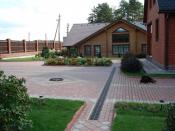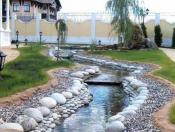Search
Login
Diseases and pests of cucumbers - symptoms and control methods
Cucumbers, one of the most popular seasonal vegetables that do not require special care, but still their cultivation is complicated by the invasion of pests and the development of the disease. The defeat of the culture is associated with many factors - from improper care to adverse weather conditions, in any case, with signs of the disease and noticed pests, you must fight, and even better, try to prevent their appearance.
Content:
- Cucumbers - protection against diseases and pests, prevention.video
- Anthracnose
- Withering of a cucumber, fusarium. Mosaic virus
- Spotting, bacteriosis
- Powdery mildew
- Downy mildew
- Gourd aphids
- Spider mite
- Whitefly
- Growth fly
- Thrips
- video
Cucumbers - protection against diseases and pests, prevention
Cucumbers, the plant is very thermophilic, does not tolerate excessive moisture and cooling. If the air temperature at the initial stage of growth drops below 12C and the seeds are in a humid environment, most of the sprouts die from mold. During flowering, low temperature provokes the development of powdery mildew, the leaves of cucumbers turn yellow. Prevention of powdery mildew is to lightly irrigate the soil, as it dries, the development of mold is prevented by stable warm weather.

Loss of shrubs can be caused by infection of the root system and soil pests of cucumbers, in these cases, compliance with the principles of crop rotation of gourds will help - planting gourds for more than 4 years in a row is not recommended.
Increase the immunity of cucumbers 2-3 mineral top dressing during the growing season, it can be an aqueous solution with potassium salt of 20 g, urea 8 g and superphosphate 20 g.
Gardeners are interested in another issue that affects crop yield and plant health - how to water cucumbers. Cucumbers require a lot of water, they do not tolerate drought exactly, as well as excessive watering with cold water. Contrary to popular belief, at the beginning of growth, plants do not need frequent watering, if the soil does not dry out, more moisture is required from July to August.
The best measure for the prevention of cucumber diseases is the selection of disease resistant varieties and proper care. Most cucumbers genetically stable and sprouted under glass have a good hardening against rot, but you should make sure before planting that other cultures surrounding the cucumber plot are not infected with this ailment.
Based on the foregoing, to summarize the prevention - the sun, moderate watering, resistant to disease varieties. If you still could not protect the cucumbers, we suggest that you familiarize yourself with the most common diseases and take appropriate measures so that you are no longer bothered by the problem - cucumbers, diseases and pests.
Anthracnose
Usually they are infected by well-developed and fruiting plants, the disease leads to decay of the fruit, drying out of greenery. The first signs of anthracnose are blurry spots on the leaves and fruits of brown color, in wet weather the spots acquire a pink hue.
Control measures consist in the treatment of crops with copper sulphate and lime at the rate of 50 g each per 5 liters of water. During the growing season, cucumbers are sprayed 3 times, the last processing is carried out a week before the harvest.

Withering of a cucumber, fusarium. Mosaic virus
Unfortunately, already infected plants with fusarium and mosaic virus cannot be treated, preventive measures include disinfection of the soil with boiling water or green manure, selection of resistant varieties, removal of crops with the first signs of the disease. Outwardly, the disease does not manifest itself in any way, when the leaves are formed, they begin to fade, a light coating can be seen on the lower leaves in wet weather.
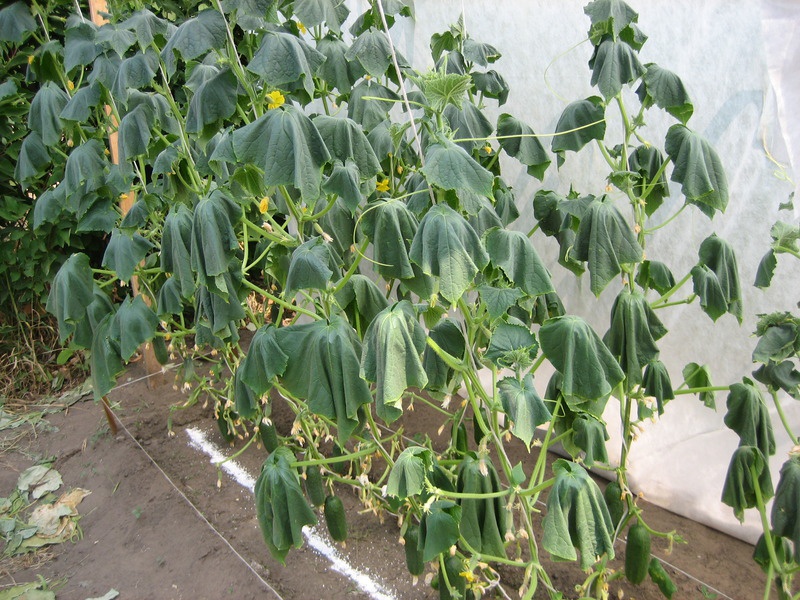
Spotting, bacteriosis
Bacteria infect cucumbers from the time of sowing to the end of fruiting, high humidity and heat exacerbate the problem, the quality of the crop decreases - the fruits are deformed, acquire a bitter aftertaste. The leaves of the cucumber turn brown, are covered with light brown spots and subsequently fall off.
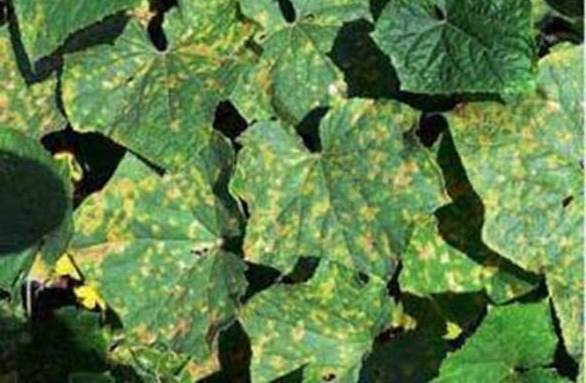
Prevention measures - deep digging of the soil, alternating crops on the site, the correct distance between rows and bushes, heating the seeds to 50 ° C and soaking them for 10 hours in manganese. In the fight against this disease, fungicides are used.
Powdery mildew
The first symptoms of powdery mildew are white small spots along the entire surface of the leaf, in advanced cases, the spots turn yellow, and plants grown in the shade often become infected with powdery mildew. Fruits become unsuitable for storage and processing, lose their taste value. In the fight, chemicals, spraying and watering with tinctures of tansy, garlic, and horsetail are effective.

Downy mildew
Diseases are preceded by high humidity and low temperature, first the old leaves are affected, then the young. Yellow spots appear on the upper side of the leaves, after rain, a gray coating is noticeable on the lower side of the leaf, in advanced cases, the spots on the leaves turn brown and scatter throughout the leaf. The fruiting of cucumbers is suspended, the fruits do not ripen and are deformed.
During the fruiting period, cucumbers are sprayed with 1% Bordeaux liquid in the interval of 10 days. It is used to prevent powdery mildew and horsetail decoction for watering plants.

No less spoil the crop pests of cucumbers in the greenhouse and open ground, which is very difficult to prevent the appearance. Let's move on to the next section - cucumbers, pest control.
Gourd aphids
Small pests densely populate the entire plant, damaged leaves fall off and curl, the development of cucumbers slows down, and melon aphid carries viral diseases to plants. A solution of laundry soap, infusion of roots and leaves of dandelion will help rid cultivated plants of aphids. Foliar fertilizing with phosphorus-potassium fertilizers cope with the problem, spraying the affected leaves is repeated after 5 days.
Spider mite
Thin spider webs on shoots, small mites on the underside of leaves, light green and yellow spots on leaves are all signs of the presence of a spider mite. Hot weather promotes the propagation of pests, moist, on the contrary, is unfavorable for them, which implies that the main weapon against spider mites is the frequent spraying with water, ordinary or infused with garlic (100 g per 5 l of water).
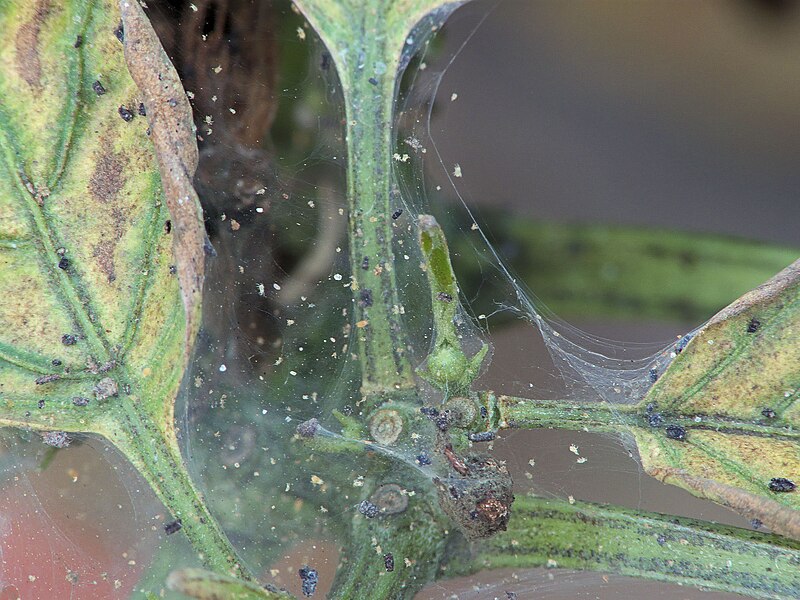
Whitefly
Whitefly feeds on the sap of plants, weakening them and leading to death, the leaves of cucumbers gradually blacken and fall off, possibly infection with viral diseases. Plants are sprayed with specialized drugs, for prevention it is recommended to plant tobacco among the melons beds, which will attract not only whiteflies. Another way to combat is to water the plants with soapy water.

Growth fly
Fly larvae are dangerous, cucumber fly lays eggs in the autumn in the soil, where they ripen until spring, the larvae damage the seedlings of cucumbers and they die or continue to grow, but are already weakened, give a small crop. If manure is used as a fertilizer, it should be carefully sprinkled with earth so as not to attract flies, it is advisable to cover new plantings with a film and feed with accelerated growth with mineral fertilizers. Insecticides are used to control larvae.

Thrips
On the upper side of the leaf, white or brown rounded spots, deformation and drying of the leaves are visible. At first, it is difficult to see insects, but when considerable damage has already been done, thrips are easily discarded, yellowish larvae are visible on the leaves. Pests can be destroyed with the help of chemical insecticides or planted on the plants of the larva of the predatory mite, Amblyseus.


